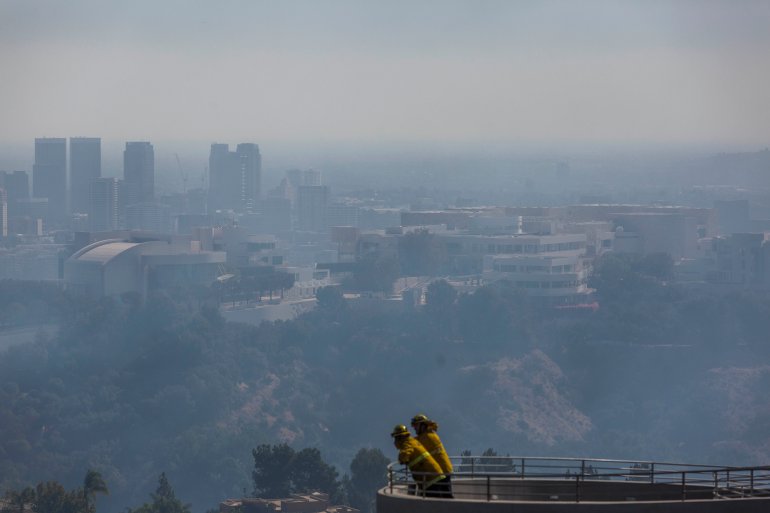
Santa Ana winds ripping across California over the past week have fueled a series of destructive wildfires. But officials say the largest blazes represent just a small percentage of those sparked amid critical fire weather.
On average, about 170 wildfires break out a week that the general public doesn’t even hear about, Cal Fire Capt. Scott McLean said in a briefing Monday.
That’s because crews are usually able to handle them quickly, and they’re contained at 10 acres or less, McLean said.
Speaking a news briefing Monday afternoon, Gov. Gavin Newsom suggested that figure is about to be pushed even higher.
“Many of you may not be aware that we have put down over 330 fires just in the last 20 hours,” Newsom said.
As of Monday, there were 16 fires burning across the state considered significant by Cal Fire, including the Kincade, Getty, Tick and Glencove fires.
“This is, unfortunately, now California’s normal,” McLean said. “And it’s absolutely vital that everybody in this state be prepared for these weather events.”
Increased fire activity over the past week has been driven by dangerously high winds and low humidity across the state, conditions that have helped fires grow at extreme speeds. On Monday alone, more than 200,000 Californians were evacuated from their homes, McLean said.
And despite a small break in wind activity Monday afternoon, authorities expect another round of strong gusts to return soon — as early as Monday night in northern parts of the state and Tuesday night further south. On Wednesday and Thursday, humidity is expected to linger in the single digits from Santa Barbara to San Diego.
“The worst of the punishing winds may be yet to come,” retired Jet Propulsion Laboratory climatologist Bill Patzert told the Los Angeles Times. That’s because they’ll be carrying colder, heavier air that will gain momentum on their way down into the Los Angeles Basin, he said.
Winds should subside heading into the weekend, but unseasonably low humidity is expected to persist across the state.
Resurgent winds could be a recipe for new, large fires that will make existing blazes more difficult to battle. Firefighters said they were working to strengthen containment lines that could be impacted by the incoming wind event.
Devastating fires tend to spark this time of year, due to the weather conditions.
Last year, both the Camp Fire and Woolsey Fire started Nov. 8. In October 2017, a series of fires destroyed dozens of homes in the Sonoma area, where the Kincade Fire is burning now.
As soon as red flag warnings are issued, residents in affected areas should prepare for the worst, McLean said.
“When critical fire weather is forecast, have that evacuation kit ready to grab and go,” he said. “A full tank of gas needs to be in your vehicle. We cannot stress this enough, especially with the power outages we’ve been seeing.”
McLean suggested Californians get into the habit of making sure their gas tank is mostly full at the end of each workday. And he referenced a Ring doorbell video showing residents evacuating during the Tick Fire as a reminder to have bags packed and valuables secured.




















